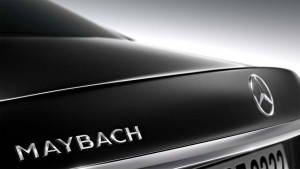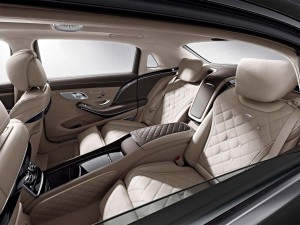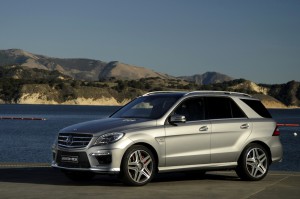
Mercedes announced it is bringing back the Maybach. The maker is also going to clean up the alphabet soup that is its naming system.
If you have a hard time telling an S from an E, or an ML from a GL, you’re not alone. With all the new models it has added in recent years – and more coming at the rate of about one per quarter – the names used for the various members of the Mercedes-Benz line-up have become increasingly confusing.
Now, the German maker wants to impose some order on its world and is rolling out a new nomenclature strategy that it says should be a good bit easier to understand – though it could add still more confusion in the short-term as the GLK becomes the GLC and the ML becomes the GLE.
Mercedes also delivered a surprise by announcing it is bringing back the Maybach name it seemed to have abandoned for good just a couple years ago. It’s new super-premium models will now carry the designation Mercedes-Maybach, while its highest performance offerings will be dubbed Mercedes-AMG.
“More clarity, more transparency, more consistency for Mercedes-Benz customers – we are convinced that our new nomenclature will support us in achieving this objective. The logic built up on the basis of the core model series will enable our customers to find their way round our growing product portfolio far better,” says Jens Thiemer, the head of marketing communications for Mercedes-Benz.

Mercedes' most luxurious model is back. The Maybach is returning to the market after a bit of a hiatus.
Mercedes was one of the first luxury makers to adopt an alphanumeric naming approach, a strategy increasingly copied by competitors such as Acura, Lincoln and Cadillac, the latter abandoning old nameplates such as Deville and Seville for DTS and STS. But the approach can be challenging. Acura officials admit that buyer confusion over such model names a ILX, TLX and RLX have not helped it boost sales.
Mercedes itself has tinkered with its nomenclature over the years. Its original “Baby Benz” was originally known as the 190 before becoming the C-Class. Two decades ago, when it offered just a handful of models, it was relatively easy to distinguish between small, medium and large, walking up from the C- to the E- to the S-Class. But there are now several dozen different Mercedes models, a half-dozen in the crossover category alone.
And to complicate matters, the maker has been making major changes in its powertrain line-up, as well. It not only offers a variety of gasoline engines but diesels, hybrids, plug-ins, pure battery-electric models and even hydrogen fuel-cell vehicles.
Going forward, diesel-powered models will feature a lower-case “d,” with an “h” for hybrids, an “e” for electrics, and an “f” for fuel-cell vehicles.
The basic models, the A-, B-, C-, E- and S-Class lines, will remain the same.

Mercedes is attempting to clean up its alphanumeric naming system. The ML63 will now become the GLE.
(Mercedes, BMW slugging it out for U.S. luxury sales crown. For more, Click Here.)
But Mercedes will unify its utility vehicles into what it sees as a more logical sequence. That starts with the new subcompact GLA, while the old GLK becomes the GLC – as in “compact.” The biggest change sees the popular, U.S.-made ML renamed the GLE.
Coupes and sporty vehicles, such as the SLK will follow a similar approach, the latter now renamed the SLC.
(Click Here for details about BMW’s 3Q profit slide.)
The German maker has been hinting at changes for several months. It recently announced that its highest-performance models, such as the Mercedes-Benz S63 AMG, will now be badged Mercedes-AMG.
(New vehicle buyers gobble up luxury vehicles in October. Click Here for the report.)
And, at the most premium level, the Maybach badge will return. What was originally to be called the Mercedes-Benz S600 Pullman will now by the Mercedes-Maybach when it debuts at the L.A. Auto Show next week. Stretched eight inches over the standard version of the S-Class sedan, it replaces the slow-selling Maybach family that Mercedes had seemingly tossed off a couple years back.

When they are done can they go over to GM and fix the Cadillac nomenclature?